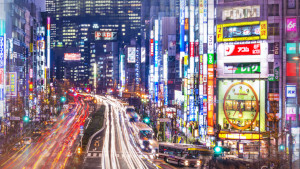Tokyo Population 2025

| Year | Tokyo Population |
| 1950 | 11,274,641 |
| 1955 | 13,186,162 |
| 1960 | 16,037,549 |
| 1965 | 19,506,576 |
| 1970 | 22,674,822 |
| 1975 | 25,916,141 |
| 1980 | 28,169,214 |
| 1985 | 29,946,951 |
| 1990 | 32,068,104 |
| 1995 | 33,386,562 |
| 2000 | 34,276,928 |
| 2005 | 35,381,220 |
| 2010 | 36,608,508 |
| 2011 | 36,859,626 |
| 2015 | 37,185,742 |
| 2020* | 37,435,191 |
| 2025* | 37,115,035 |
| 2035* | 36,132,445 |
The 26 cities of Tokyo are: Akiruno-shi, Akishima-shi, Chofu-shi, Fuchu-shi, Fussa-shi, Hachioji-shi, Hamura-shi, Higashikurume-shi, Higashimurayama-shi, Higashiyamato-shi, Hino-shi, Inagi-shi, Kiyose-shi, Kodaira-shi, Koganei-shi, Kokubunji-shi, Komae-shi, Kunitachi-shi, Machida-shi, Mitaka-shi, Musashimurayama-shi, Musashino-shi, Nishitokyo-shi, Ome-shi, Tachikawa-shi, Tama-shi. Tokyo has two major rivers, the Sumida running north to south into Tokyo Bay and Tama runs west to east and other major rivers are Edo, Arakawa and Kanda. The 5 towns of Tokyo are Hinode-machi, Mizuho-machi, Okutama-machi, Hachijo-machi, Ohshima-machi.
Tokyo Population Ranking & Density
The 1950s were a time of gradual recovery for the nation. Japan model was transformed into rapid economic growth by 1960. Due to technological innovations and the introduction of new industries and technologies, Tokyo underwent considerable transformation. The population of Tokyo was 10 million in 1962, and in 1964 the first Olympic Games were held in Tokyo, the Shinkansen popularly called Bullet Train began its operations, and the Metropolitan Expressway was opened, forming the foundation for Tokyo current prosperity. Japan achieved tremendous growth under the bubble economy, but beginning of 1990, the burst of the bubble started, making low in tax revenues caused the economic slump led to a financial loss to the Tokyo Metropolitan Government. Tokyo was, however, able to overcome this financial crisis through two successive fiscal reconstruction programs. The population also started returning to Tokyo, and for the first time in 12 years in 1997, in-migration exceeded out-migration. Tokyo population reached 12 million in 2001, and surpassed 13 million in 2010.
Tokyo population in 2023 is estimated to be 35.8 million, population in 2022 is estimated to be 35.6 million, in 2021 is estimated to be 37.5 million, and in 2020 is estimated to be 37 million, Tokyo is made up of 23 wards and 62 municipalities, and metropolis population is 13.9 Million as on 2019 and has area of 2,194 Sq km with density of 6,349 persons per sq. km., and metro area of 13,572 sq. km., with 2,662 persons sq km. In September 2013, Tokyo was selected to host its second Olympic and Paralympic Games in 2020, due to the covid the dates were rescheduled to 2021. In 2010, Tokyo population is projected to start declining once it reaches its peak in 2020. Also taking into consideration changes to the structure of society such as the graying of the population, the Tokyo Metropolitan Government started to push toward its goal of becoming the world best city where a balance between economic affluence and the quality of life is achieved and anyone can fully enjoy life.
Religion wise Tokyo Population
The main religions in Tokyo are Christianity, Buddhism, and Shinto.
Tokyo Language demographics
The main language and official language of Tokyo is Japanese.
Tokyo History
According to Japan experience, The Tokyo area has been inhabited since ancient times started out as a small fishing village, first settled around 3,000 B.C. and the place is known as Edo. Edo's development into a city did not occur until the Tokugawa period (1603-1867), when it became the capital of the Tokugawa shogunate. Edo had been Japan's largest city since the 17th century, the population in 1720 is expected to be more than 1 million. During this period, the city underwent economic and cultural changes, making it one of the largest cities in the world. Tokugawa shogunate ruled for more than 250 years until it is overthrown in 1868 by Imperial Army. Emperor Meiji moved to Edo and the city name was formally changed to Tokyo, meaning eastern capital. Meiji period was from 1868 to 1912 which is the time of reforms, this regime made education compulsory and created the imperial universities of Tokyo and Kyoto. The Meiji era brought a new urban model, inspired by the West. The Chinese lunisolar calendar is phased out and Gregorian calendar is introduced within the country. The development of its new industries like steel, shipbuilding and coal enabled Japan to rise in 1900 to the rank of a major world economic power. The development of new means of transport gave way to railway lines, Paved roads, brick buildings and gas street lights. On the death of Emperor Mutsuhito in 1912, Japan achieved the feat of moving from a feudal state to one of the world's greatest powers. The population reached 2 million in 1905. By 1935 the resident population of Tokyo had grown to 6.36 million, World War II bombing of Japan began just months after the surprise attack at Pearl Harbor, The Pacific War, which broke out in 1941, Tokyo was bombed 102 times. In the final phase of the war in 1945, in which there was great human loss and material damage. Much of Tokyo was destroyed by the bombings and by October 1945 the population had fallen to 3.49 million, half its total population in 1940. Tokyo was greatly expanded in preparation for the 1963 Summer Olympics, Tokyo's mass transit system which runs underground is the busiest in the world ferrying more than 8.7 million commuters a day and more than 3.2 billion annually of its 200 miles of tracks.
© 2019-2025 PopulationU, Research papers on Population dynamics and Social affairs, Contact | Privacy | About | Terms | 
